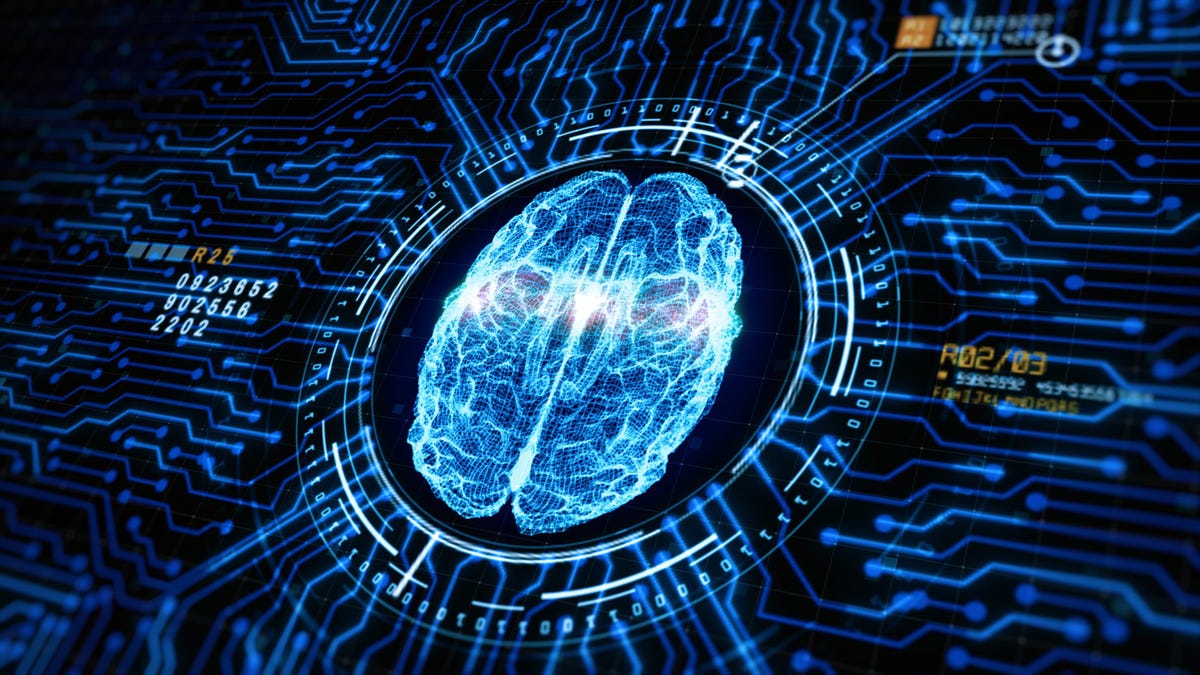Neuromorphic Computing
 Danaa Salam
Danaa Salam
Neuromorphic computing is an emerging field that involves the development of computer systems that are inspired by the structure and function of the human brain. These systems are designed to be highly energy efficient and able to process large amounts of data in real-time, making them well-suited for tasks such as pattern recognition and machine learning. Some potential applications of neuromorphic computing include image and speech recognition, natural language processing, and autonomous systems.
This is a cutting-edge topic that would likely be of interest to tech enthusiasts who are interested in artificial intelligence, machine learning, and the future of computing.
Neuromorphic computing is a field that aims to develop computer systems that are inspired by the structure and function of the human brain.
These systems are designed to be highly energy efficient and able to process large amounts of data in real-time.
It has the potential to revolutionize artificial intelligence and machine learning, enabling more advanced and efficient algorithms.
It has the potential to be more robust and resilient than traditional computing systems, as it is inspired by the redundant and fault-tolerant nature of the brain.
One potential application of neuromorphic computing is in the development of self-driving cars.
Self-driving cars rely on a variety of sensors and data sources to navigate and make decisions. They must be able to process and interpret this data in real time in order to make safe and efficient driving decisions. Neuromorphic computing could potentially be used to help self-driving cars process and interpret this data more efficiently and effectively.
For example, neuromorphic computing could be used to help a self-driving car recognize and classify objects in its environment, such as pedestrians, other vehicles, and traffic signals. It could also be used to help the car make decisions about how to navigate through complex traffic scenarios and respond to changing conditions on the road.
Overall, the use of neuromorphic computing in self-driving cars has the potential to improve the safety and efficiency of these systems, and could help to accelerate the development and deployment of autonomous vehicles.
It has the potential to be used in a wide range of applications, including image and speech recognition, natural language processing, and cybersecurity.
Neuromorphic computing could have significant implications for fields such as healthcare, transportation, and defense.
It has the potential to enable the creation of more intelligent and adaptive systems, capable of adapting and learning from their surroundings.
Neuromorphic computing could also have important societal and economic impacts, potentially leading to the creation of new industries and jobs.
Despite its potential, there are still many challenges to be overcome in the development of neuromorphic computing systems, including the need for more advanced hardware and software.
There are a few reasons why it might be important to teach students about neuromorphic computing:
Neuromorphic computing is a rapidly developing field that is expected to have a significant impact on a wide range of industries in the coming years. Understanding the principles of neuromorphic computing could be valuable for students who are interested in pursuing careers in these fields.
Neuromorphic computing represents a fundamentally different approach to computing than traditional digital computing, and understanding these differences could help better understand the capabilities and limitations of different types of computing systems.
Teaching students about neuromorphic computing could also help them develop skills in problem-solving, critical thinking, and creativity, as they learn about the challenges and opportunities presented by this technology.As neuromorphic computing has the potential to transform society and the economy, it is important for students to be aware of this technology and its potential impacts. This can help them better understand the world around them and prepare for the future.
Neuromorphic computing involves the use of specialized hardware and software to process data in a way that is inspired by the structure and function of the human brain. The basic unit of the brain is the neuron, which is a specialized cell that is responsible for receiving, processing, and transmitting information. Neurons are connected to one another through a network of structures called synapses, which allow them to communicate and pass information from one neuron to another.
In a neuromorphic computing system, these basic principles are replicated using specialized hardware and software. The hardware consists of a network of small, specialized computing elements called "neurons," which are designed to mimic the behavior of biological neurons. These neurons are connected to one another through a network of "synapses," which allow them to communicate and pass information between one another.
The software used in a neuromorphic computing system is designed to mimic the way that the brain processes and interprets information. It can be trained to recognize patterns and make decisions based on those patterns, much like the brain does.
Overall, the goal of neuromorphic computing is to create systems that are more efficient and effective at processing and interpreting complex data sets, and that can adapt and learn over time, much like the human brain does.
It is unlikely that neuromorphic computing will ever fully replace the human brain. The human brain is an incredibly complex and powerful system that is capable of performing a wide variety of tasks and functions, and it is unlikely that any artificial system will be able to replicate all of these capabilities.
However, neuromorphic computing has the potential to complement and augment the capabilities of the human brain in certain ways. For example, neuromorphic computing systems may be able to process and interpret certain types of data more efficiently and effectively than the human brain, or they may be able to perform tasks that are beyond the capabilities of the human brain.
There are several potential advantages of neuromorphic computing over conventional computing:
Efficiency: Neuromorphic systems are designed to be more efficient at processing and interpreting complex data sets, as they are inspired by the structure and function of the human brain, which is highly efficient at processing and interpreting a wide variety of information.
Real-time processing: Neuromorphic systems are capable of processing and interpreting data in real time, which makes them well-suited for applications that require fast and accurate decision-making.
Adaptability: Neuromorphic systems are able to adapt and learn over time, much like the human brain does. This allows them to improve their performance and become more effective at certain tasks as they are exposed to more data.
Robustness: Neuromorphic systems are often more robust and able to handle a wide range of inputs and conditions, as they are inspired by the brain's ability to adapt and continue functioning even in the face of damage or changes in the environment.
Energy efficiency: Neuromorphic systems are often more energy efficient than conventional systems, as they are designed to use less power and resources to process and interpret data.
There are a few potential disadvantages for neuromorphic computing:
Complexity: Neuromorphic systems can be complex to design and build, as they involve the use of specialized hardware and software that is designed to mimic the structure and function of the human brain.
Limited capabilities: Neuromorphic systems are currently limited in the types of tasks they can perform and the amount of data they can process, compared to conventional computing systems.
Lack of standardization: There is currently a lack of standardization in the design and implementation of neuromorphic systems, which can make it difficult for different systems to interoperate and work together.
Cost: Neuromorphic systems can be more expensive to develop and produce than conventional systems, as they require specialized hardware and software.
Limited data availability: Neuromorphic systems rely on large amounts of data to train and improve their performance, and the availability of relevant data can be a limiting factor in the development and deployment of these systems.
Subscribe to my newsletter
Read articles from Danaa Salam directly inside your inbox. Subscribe to the newsletter, and don't miss out.
Written by
